Paleo Vegeo - The Basics
 What is a Paleo Vegeo... well to be honest it is a modified pescatarian diet. A pescatarian is somewhat of a vegetarian, but they eat fish along with the dairy, grains, nuts, seeds, vegetable, fruits and grains. We've modified that process to exclude most dairy, except for the undenatured grass fed whey or a cold cross-flow unfiltered and advanced dual microfiltered non-gmo soy protein. A lot of the problem with dairy is that it increases mucus production and inflammation in the body. Properly processed undenatured grass fed whey protein can deliver anti-inflammatory activity in the body. Research shows that uncontrolled oxidation in the body creates or contributes to inflammation. And that's just the first part of this LONG "basic" of earing Paleo Vegeo. So think of this as a program that eliminates the harsh inflammatory foods to give you more whole foods, and a less toxic gut. This style of eating, a lifestyle of sorts, includes nuts, seeds, vegetables (LOTS of those), fruits and if vegan non-gmo soy.
What is a Paleo Vegeo... well to be honest it is a modified pescatarian diet. A pescatarian is somewhat of a vegetarian, but they eat fish along with the dairy, grains, nuts, seeds, vegetable, fruits and grains. We've modified that process to exclude most dairy, except for the undenatured grass fed whey or a cold cross-flow unfiltered and advanced dual microfiltered non-gmo soy protein. A lot of the problem with dairy is that it increases mucus production and inflammation in the body. Properly processed undenatured grass fed whey protein can deliver anti-inflammatory activity in the body. Research shows that uncontrolled oxidation in the body creates or contributes to inflammation. And that's just the first part of this LONG "basic" of earing Paleo Vegeo. So think of this as a program that eliminates the harsh inflammatory foods to give you more whole foods, and a less toxic gut. This style of eating, a lifestyle of sorts, includes nuts, seeds, vegetables (LOTS of those), fruits and if vegan non-gmo soy.
What causes that oxidation??
Oxidation is a process where oxygen combines with another substance to produce an oxide. And every second we breathe in oxygen, which goes inside our bodies and the process of oxidation occurs.There is a lot of research now into what they call the "Free Radical Theory", and it's all about oxidation. Once a molecule is oxidized it reacts with its neighboring molecules (i.e. it robs an electron from a neighboring atom) and causes a cascade of damage. A healthy cell can can handle free radicals generated by physiological activity but if the production of free radicals becomes excessive or there isn't a sufficient supply of antioxidants, the body is overwhelmed and oxidative damage and chronic systemic inflammation results. That day in and day out, chronic systemic inflammation is the root of all degenerative diseases.
Now they've show that even if you have a milk allergy, whey protein consumption will not necessarily trigger mucus production and that inflammation that you are worrying about. In addition to whey proteins, the Cleveland Clinic lists several other milk components that can trigger increased mucus production or other allergic responses. They include casein proteins, casein enzymes and substances called caseinates. I recommend you stay away from any diary or whey protein that contains these caseins.
Now muscle burns fat, so you need muscle as you age. That's the big difference between the Paleo man and the Marathon runner. Paleo needed to lift heavy, be strong, and have the interval endurance to get up and get out. So if you are a marathoner, then pure veganism is really an amazing thing for you. That being said, the heavier the training the more vulnerable we become to that inflammatory activity. Building muscle mass and even just maintaining that hard earned muscle is a balancing act between maximum workload and rate of healthy recovery. Adding in extra protein tips the scale in your favor because it provides the tools to manage that inflammatory activity despite your age. That's why I recommend you use either an undenatured whey in your recovery if you still use dairy, or go with a Vegan alternative that is grain-free and really delish.
So why so vegetable based?
You may not want to believe it but our ancestral hunter-gatherers ate the majority of their calories by eating plant foods because quite frankly meat is just too unpredictable. How often are you going to hunt down a wholly rhino or a cow reindeer every day? Just too much work. If you were near a good water source catching a fish was much easier, but a lot of the paleo day was on the go. Also, Swedish archeologist, Kerstin Lidén has discussed how the paleolithic time was about 2 million years and that there (of course) was an immense variation in these people´s diets based on their location. This is also what has been observed among present days´ primitive people with a lot of research that I've read about "In Defense Of Food" by Michael Pollan.
So I think that part of your process of what should I eat has to come from "where did I come from". If your ancestors lived by a sea, there would be more fish and seafood in their diet. So as far as your proteins derived from animals, in research of paleolithic diets the percentage ranges from 25% in the Gwi people of southern Africa, to 99% in Alaskan Nunamiut, but the Paleo-Indian ancestors of Nunamiut are thought to have arrived in Alaska no earlier than 30,000 years ago. So in reality our ancestors were generally only hunting and fishing in forager societies living at higher latitudes. Excluding those in a cold-climate and the equestrian foragers they've said the diet structure was closer to 52% plant calories, 26% hunting calories, and 22% fishing calories. So eating a steak at every meal is not really paleolithic in my research. Now beets, potatoes and other root vegetables were on my Scandanavian ancestors plates and so I find no problem eating them, or most other vegetables. But that means real fresh vegetables, or flash frozen because cans are not natural. BPA is not your friend. I eat a lot of plants throughout my day, and I encourage you to do the same!
One thing I found really interesting when deciding to go Paleo/Vegeo was that sugar was first recorded as having been brought to Sweden in 1324. My ancestors where there long before that, and so I cannot believe that I was born to eat sugar, just as much as I don't believe I was born to eat a cow. And that brings us to the sugar converted carbohydrates like lots of lots of grains in our regular diets.
So what about grains?
Sprouted Einkorn was around in my ancestors diet 10,000 years ago. {You can buy organic Einkorn berries to grind yourself here or here}Einkorn the believe is the oldest form of cultivated wheat, with findings as early as 16,000-15,000 BC. Einkorn is known as the grain of the Pharaohs, so if it's the grain of the caveman I don't know. Also I have found that in my family ancestry, oats {I'm talking gluten-free steel cut oats} were part of their natural diet. Oat were grown all over Northwest Europe and they were even being grown successfully in Iceland. That doesn't mean to run out and get the commercially grown stuff. In fact a lot of my Indian friends are about to get made at me. Oats are grown in upper valleys of Himalayas like in Indian state of Himachal Pradesh from Mahabharat times. There it is known as Jau. The temperate climate of this region is not suitable for millet, rice or wheat. So that means that rice may or may not be a healthy item for you to include in your diet. Again, all about location. In Scotland, a dish called sowans was made by soaking the husks from oats for a week, so that the fine, floury part of the meal remained as sediment to be strained off, boiled and eaten.
Quinoa {"Qin-wah"} originated in the Andean region of Ecuador, Bolivia, Colombia and Peru, where it was successfully domesticated 3,000 to 4,000 years ago for human consumption, though archeological evidence shows a non-domesticated association with pastoral herding some 5,200 to 7,000 years ago. If you can get organics that still require you to wash, I would recommend it. I would even go as far as to say that quinoa flour would be a good alternative if there is something like bread that you just can't give up. But, again, I feel like quinoa would be best suited for the vegan paleo, or the paleo vegeo who's ancestors originated in the Andean regions. I personally can't do very much quinoa at all after going paleo I realized it was a huge intolerance for me.
Flax, a member of the genus Linum in the family Linaceae, is a food and fiber, and was already under wide cultivation in the Babylon Empire in 3,000 BC and it’s early beginnings are thought to precede this date by a couple of millennia. One thing that's amazing is that 57% of flax seed oil is Alfa-linolenic acid (LNA) which is the highest LNA food known in the world. LNA is one of the two essential fatty acids we must get from eating foods. Our bodies can't make this precursor nutrient our systems need to make other vital fatty acids which perform life’s functions. In a study over 50.000 woman they found that a high ALA intake prevents depressions. High DHA and EPA intake did not prevent depressions (and so you can't get enough in just meat and fish)
http://www.ncbi.nlm.nih.gov/pmc/articles/PMC3095504/?tool=pmcentrez I recommend you enjoy flax oil (cold pressed) or finely ground flax seeds every day. I actually love the Flax + Protein Milk. Don't judge, it's amazing. I gave up hemp milk after giving this a try. I love it. Always an option for us on the go followers.
Rice is BACK! I have always said that I wasn't a fan of brown rice after I heard about how the hulls can create leaky gut issues. However I was my healthiest and lean when I was running two restaurants, one Mexican and one Chinese. I ate white rice with veggies for my morning snack, and white rice with veggies for dinner. And we now know how important resistant starch is for us {white potato is back as well for this same reason}. So I recommend if you've cleaned out your system, give it a try.
What about hemp?
Hemp use archaeologically dates back to the Neolithic Age in China, with hemp fiber imprints found on Yangshao culture pottery dating from the 5th century BC. The Chinese later used hemp to make clothes, shoes, ropes, and an early form of paper as we've seen in a lot of the archaeological finds. The classical Greek historian Herodotus (ca. 480 BC) reported that the inhabitants of Scythia would often inhale the vapors of hemp-seed smoke, both as ritual and for their own pleasurable recreation. The world-leading producer of hemp is China, with smaller production in Europe, Chile and North Korea. Over thirty countries produce industrial hemp, including Australia, Austria, Canada, Chile, China, Denmark, Egypt, Finland, France, Germany, Great Britain, Hungary, India, Italy, Japan, Korea, Netherlands, New Zealand, Poland, Portugal, Romania, Russia, Slovenia, Spain, Sweden, Switzerland, Thailand, Turkey and Ukraine. {That stuff can grown anywhere and in fact is one of the faster growing biomasses known} A text by Ko Hung gives warning, that "Hemp seed oil spoils wine", which means that they were using hemp oil a long time ago. Western Han tombs at Yinqueshan (Linyi) were found to contain pottery filled with hempseed and other grain and the Chi-chiu-pien, a primer composed in the first century BC for teaching and writing, lists rice, millet and hemp in one sentence. So I think that it's something that should be used in the Paleo Vegeo diet. I have no problem with you vegan paleos or otherwise to use this complete protein in your diet.
What about other seeds and nuts?
The Sacha Inchi seed is one of my favorites, especially because I'm allergic to most nuts and seeds. It comes from the Amazon of Peru has been known to the natives (pre-Incas and Incas) for thousands of years according to evidence provided by the pottery found in their tombs. The first scientific proof came from the scientists Hazen and Stowesand at the Institute of the Food Science at the University of Cornell in the USA in 1980. The analysis carried out by the scientists established that the Sacha Inchi seeds contain an unusually high level of oil (49%) and a relatively high content of proteins (33%). In addition, the Sacha Inchi seeds are rich in essential and non-essential amino acids as well as natural antioxidants, and Vitamin A and E. Another one is the maya nut, and I've seen maya nut flour online as well. It's been around for thousands of years in the same area.
The chestnut was probably one of the first foods man ever ate. One thing to remember is that although the chestnut dates back to prehistoric times, it has almost as much starch in it as a potato.Treat it more like a fruit in your diet than a nut because of this, and never eat one raw.
Almonds are an ancient food that have been written about in historical texts, including in the Bible. They are thought to have originated in regions in western Asia and North Africa. It's a high fat food that is actually really good for your health, and that's why Dr. Oz is said to carry almonds around with him wherever he goes. Almonds are rich in potassium and magnesium, and vitamin E. If I could eat these they would be first on my list. I recommend you could incorporate almond butter {organic and no sugar} and Almond milk as well into your diet. With regular almonds you want to soak and dry out before eating as well.
So... finally what about fruit?
Our very own evolution has forced us to become vitamin C junkies. Most animals can synthesize their own Vitamin C, and we cannot. We have to obtain Vitamin C from the food we eat. Fruit and vegetables are the prime source. The apple, asian pear, apricot, blackberries, blueberries, strawberries, raspberries, grapes, cherries, grapefruit, lime, bananas, peaches, pineapples, mulberries and even avocados are great sources of fruits for you to incorporate at a limited amount into your diet. In fact Mulberry trees are found in abundance in several countries in Asia, Europe, Africa and America. Mulberries are considered an important food remedy in Chinese medicine, will clean your blood, extend your life, strengthen your kidneys, clean your liver and are quite high in iron.
And the other foods... pastured eggs, beans wild caught fish, etc
Cave men would have found eggs in a birds nest most likely. And do you think those birds were "vegetarian grain fed" or occasionally "cage free"? If you are going to eat eggs, they need to be pastured eggs where the chickens just roamed and enjoyed bugs, seeds and the sort for their diet. Pastured eggs can provide a rich source of the following nutrients: Choline, Inositol, Lecithin, Vitamins A and D, Omega-3 essential fatty acids that your body is going to crave if you are pumping iron like I want you to. Inositol is a great support to those of you with PCOS, and we'll talk more about that on the website. One of the most popular deficiency diets among researchers is the choline-deficient diet which happens a lot with vegan and vegetarian diets if you don't eat the right foods.
Choline deficiency happens a lot with vegans {most people get choline from their dairy, soy, peanut and beef intake} and by itself induces metabolic syndrome (indicated by insulin resistance and elevated serum triglycerides and cholesterol) and obesity. Choline is available in Soymilk, tofu, quinoa, and broccoli, but I don't ever recommend anyone use soymilk or tofu. 100 grams of quinoa has 70 mg of choline. One cup of broccoli has 60 - 65mg of choline. The daily requiremens of choline for men is 550mg per day of choline and women is 425mg per day. Pregnant women should take 450 mg a day, and lactating women should take 550 mg a day. One note on the pregnancy recommendation is that researchers from Cornell University found in the 12-week study that consumption of 930 milligrams of choline a day by women in their third trimester of pregnancy is linked with a 33 percent decreased concentration of cortisol -- the stress hormone -- in their babies. This is compared with a control group of pregnant women who consumed 430 milligrams of choline a day. One large egg contains about 126mg of choline, and that comes from the egg yolk and not the egg whites. So you have to have the whole pastured egg. Lacking in this essential will give you fatty liver, and we know our processed SAD {Sad American Diet} is causing a lot of fatty liver issues. You can also get choline from wild caught salmon, about the same amount as broccoli.
Another great support for your paleo vegeo diet is going to be chlorella. Chlorella's fibrous cell wall is a magnet for mercury, lead and other heavy metals, also pcb's, dioxin and other cancer-causing compounds - carrying them safely out of your body. Do you know how many heavy metals are in your body. If you have recently had your fillings removed, you should have this in your diet, as well as I can put you through a cilantro heavy metal detox, but that's another topic of discussion. Cracked cell chlorella, like is offered in the Raw Greens Blend, makes available the nutrients from the interior part of the chlorella cell; a superabundance of chlorophyll, vitamins, minerals and amino acids. Your ancestors drank pond water... gross right? But they got all of these superfood support from it that you don't get in your daily life. A recent study in pregnant women found that their chlorella supplementation reduced the maternal-fetal transfer of dioxins; it also reduces the transfer of dioxins through breastmilk. It's worth adding into your daily routine.
And wild caught fish. One of the reasons you get those amazing Omega-3's from your wild caught salmon is that they eat the spirulina algae. Your farmed salmon are being fed soybeans, yuck. Do you really need another way to get soy into your diet? It is a toxin after all. Wild fish are usually healthier (higher in Omega-3s) and actually less contaminated than farmed fish. So you don't have to eat fish, you can supplement with spirulina or get a product like the Raw Greens Blend that has your spirulina in it if you are going to stick to a Paleo style vegan or a vegetarian diet instead of the pescatarian diet. Spirulina was a food source for the Aztecs and other Mesoamericans until the 16th century. Spirulina has been traditionally harvested in Chad. It is dried into cakes called dihé, which are used to make broths for meals, and also sold in markets. It contains about 60% protein, and is a complete protein like your quinoa containing all essential amino acids. It is superior to your typical plant proteins out there. It also offers your B12 for the vegans in the crowd, and is bioavailable as a rich source of vitamins and minerals.
Fava beans were an ancient bean. This bean dates back to the time of the Egyptian pharaohs and is mentioned in numerous Greek and Roman texts of antiquity. Both fresh and dried fava beans will have a thick outer skin, once you remove them from the pod. It’s not terribly distracting when the beans are fresh, but the dried fava beans could shed the extra layer, so much tougher it is. Fortunately, they slip right off the pale, ivory-colored beans after an overnight soak in water. On Dr. Weil's site he states: "along with chickpeas, lentils and peas, they are thought to have entered the eastern Mediterranean diet in about 6,000 BC, not long after the invention of agriculture. Originating in North Africa, fava beans provided sustenance to the pyramid builders in ancient Egypt; and, until the Spanish brought the "common bean," Phaseolus vulgaris back from the New World in the 15th century, favas were the only beans in the European diet." As long as you soak your fava beans, chickpeas, lentils and peas before eating, then they are okay on my paleo vegeo diet. I prefer that you start with fava beans, and the as your body gets stronger add in the other beans, and eventually if you do well with these, you can add in other varieties of soaked beans as well.





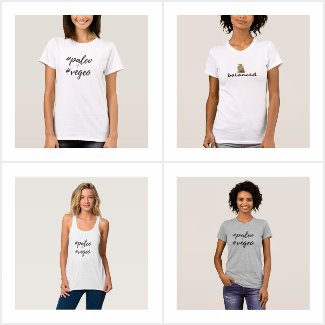

















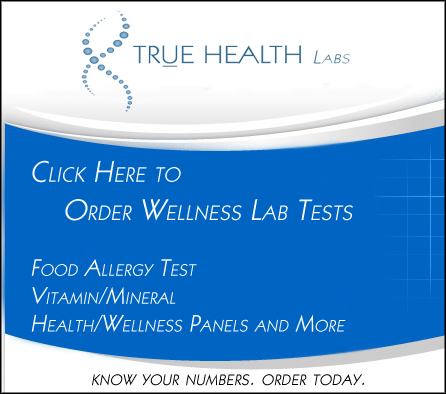






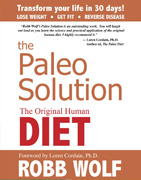
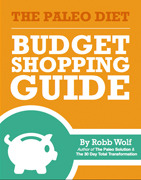
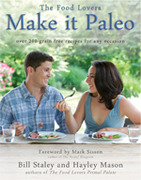
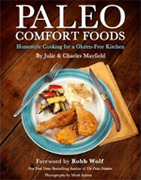


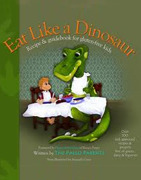
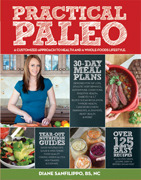
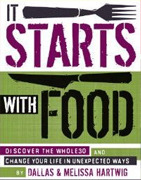
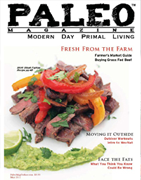
It’s a classic great for me to go to this blog site, it offers helpful suggestions
ReplyDeletewarrior gene
comt gene
23andme health
mthfr c677t
promethus dna